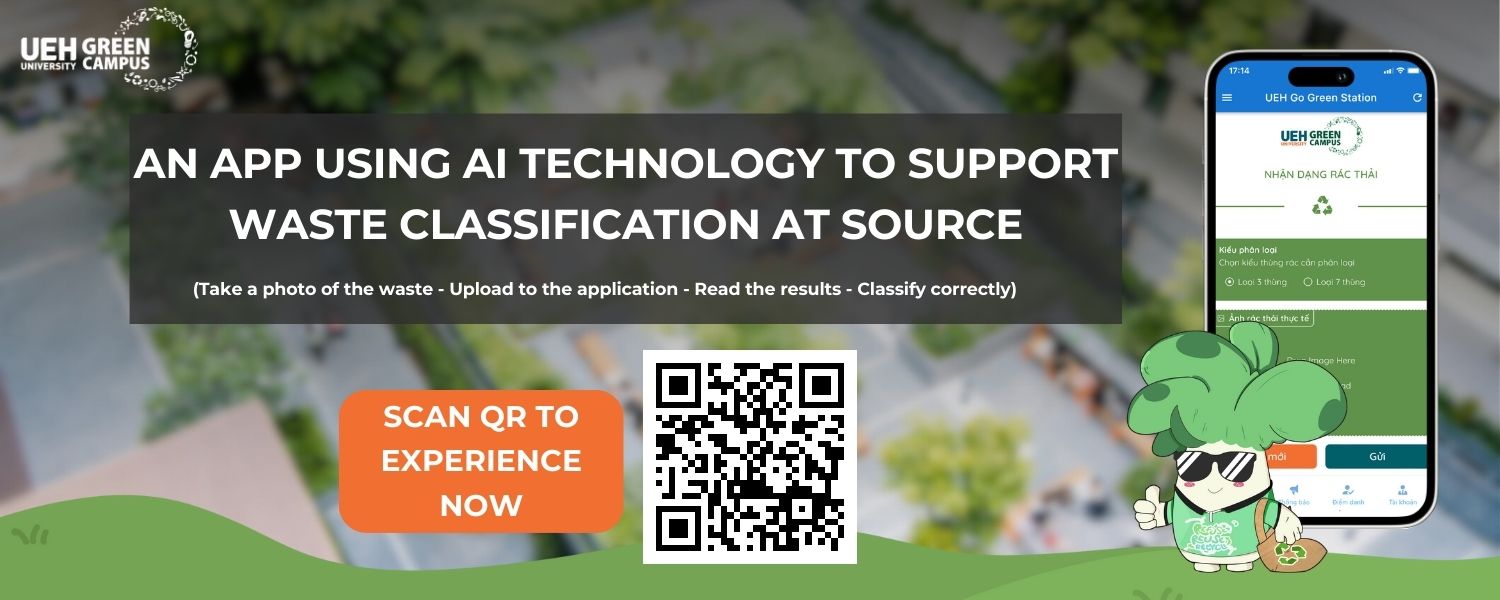Keywords: Waste separation, source-based waste sorting, mobile application, artificial intelligence, Ho Chi Minh City
Amid the hustle and bustle of the city, where thousands of tons of waste are generated daily, smart trash bins quietly perform their duties—not just storing waste, but also “understanding” it. A single photo, a few seconds of processing, and the user instantly knows where to properly dispose of a milk carton. What once seemed like science fiction is gradually becoming reality thanks to the advent of Artificial Intelligence (AI). And Ho Chi Minh City, with its vibrant pace of life and urgent waste management challenges, is serving as a testing ground for this journey toward a greener future.

Source-based waste separation is one of the crucial steps in effective waste management, especially in urban settings like Ho Chi Minh City, where the volume of household waste continues to rise. However, residents often struggle with this practice due to a lack of knowledge, motivation, and the perception that sorting waste is overly complicated. The development of AI technology and mobile applications offers new opportunities to support, guide, and encourage waste separation behavior. For this reason, a student research team from the University of Economics Ho Chi Minh City (UEH) conducted the study titled “Application of Artificial Intelligence (AI) Towards a Green Lifestyle: Evidence from the Implementation of a Mobile Application for Waste Separation at Source in Ho Chi Minh City” to explore how AI can contribute to fostering a green lifestyle through its application in waste separation at the source.
AI and Mobile Applications in Waste Management
In recent years, Artificial Intelligence (AI) has emerged as a key technology driving the green transition in urban environments. AI refers to the capability of computer systems to simulate human thinking—from data analysis to learning and decision-making—and has been widely applied across various sectors in pursuit of sustainable development. Specifically, in waste management, AI not only supports automation but also helps reshape human consumption behaviors.
When integrated into mobile applications—a common interaction platform in urban life—AI becomes a direct bridge between technology and end-users. Mobile apps equipped with AI for waste recognition assist users in easily identifying types of waste, provide proper sorting recommendations, and track their own habits. This approach not only increases convenience but also reduces cognitive barriers—two critical factors influencing the practice of source-based waste separation.
To explain the impact of this technology on user behavior, this study applies the Technology Acceptance Model (TAM) developed by Davis and colleagues (1989). This model posits that two primary factors determine technology acceptance: Perceived Usefulness and Perceived Ease of Use. According to Davis et al. (1989), when users believe that a system helps them improve their performance and that the system is easy to use, they are more likely to form a positive attitude and increase their intention to use it in the future.
Building on this foundation, the study also incorporates variables from the Theory of Planned Behavior (TPB), including attitude, subjective norms, and perceived behavioral control. These variables have been shown to directly influence sustainable waste sorting behavior in previous studies (Ajzen, 1991). For example, Liu and Hsu (2022) applied an extended version of TAM to examine the intention to use a smart recycling system in Taiwan and found that a positive attitude, along with social influence, played a key role in shaping sorting behaviors.
Thus, when AI is integrated into mobile applications, technical and behavioral factors no longer exist in isolation—they interact closely to form a green technology ecosystem. The application is not merely a supportive tool but also a medium that reshapes awareness and encourages waste-sorting behavior—an essential component of a green lifestyle in rapidly developing urban areas such as Ho Chi Minh City.

Research Findings
From the hundreds of responses collected, the research team conducted an in-depth analysis and identified four key factors influencing users' decisions to adopt AI-powered applications for waste separation at the source. Among them, the strongest influence was Perceived Usefulness—users felt that the application genuinely helped them save time and effort, making the task of waste sorting much simpler. This was the key motivator for them to begin using the technology.
The second most influential factor was environmental concern. When users were clearly aware of the environmental impact of waste, they were more inclined to seek solutions—and technology appeared to be an effective tool in their eyes. The next factor was the enjoyment of the user experience. An application not only needs to be effective but also friendly, fun, and easy to use—since sometimes, a bit of inspiration is enough to spark a behavioral change. Finally, Perceived Ease of Use, although ranked lowest among the four factors, still played a foundational role. No matter how useful an application may be, if the interface is too complicated, users might still give up.
All of these factors do not exist in isolation—they are interconnected within a behavioral ecosystem where technology, user perception, and experience collectively shape the decision to adopt. And once we understand what drives users to act, the next question is: What can we do to further strengthen that motivation? This is where policy implications come into play—offering practical suggestions to turn research into real-world action.
Policy Implications
Based on the findings above, one thing is clear: if we want people to truly take action, we cannot rely solely on technology—we also need smart strategies in communication and user experience design.
First, the factor of environmental concern is a powerful motivator. Therefore, government agencies and educational institutions should step up efforts to communicate the benefits of waste separation—not only through books, television, or social media, but also within school curricula and corporate initiatives. When people, especially younger generations, truly understand the meaning behind each sorting action, their behavior begins to shift.
Second, the factors of ease of use and a user-friendly interface should be prioritized in application development. A simple, intuitive design—combined with more accurate waste recognition powered by AI—will make users more willing to try and more likely to maintain this new behavior in daily life.
Finally, the “fun factor”—though it may seem minor—has significant influence. When users feel enjoyment, receive recognition, or simply feel like they’re part of a meaningful game, they are more likely to stay engaged with the app. Features such as leaderboards, virtual rewards, or personal progress tracking can help transform the act of waste sorting from a duty into a source of joy.
This study is not just about a technological application—it serves as an invitation to a new approach in urban management. When AI is combined with human insight, green behaviors can spread naturally and sustainably. And perhaps one day soon, waste sorting will no longer be something we should do, but something we want to do—thanks to the support of smart, friendly, and inspiring AI companions right in our pockets.
This research has indirectly contributed to SDG 11 – Sustainable Cities and Communities, SDG 12 – Responsible Consumption and Production, and SDG 13 – Climate Action. Read the full study Application of Artificial Intelligence (AI) Towards a Green Lifestyle: Evidence from the Implementation of a Mobile Application for Waste Separation at Source in Ho Chi Minh City HERE.
Authors: Nguyen Kim Cuong, Ho Thi Trang Bach, Le Tuan Kiet, Tran Phuong Mai, Trinh Thi Thanh Huyen – University of Economics Ho Chi Minh City
This article is part of the Green Research Community series with the message: “Research Contribution for UEH Living Lab Green Campus.” UEH warmly invites the community to stay tuned for upcoming issues of the Green Research Community bulletin.
*To support the development of the “UEH Green Researcher Community,” all members will have the opportunity to attend a scientific research methodology course focused on Living Lab and Green Campus themes. In addition, qualified research projects will receive a Certificate of Recognition from the UEH Sustainable University Initiative and financial support for eligible topics.
Additional Information:
SDG 11 – Sustainable Cities and Communities aims to build urban areas and communities that are resilient, safe, and sustainably developed by improving the quality of living environments, managing waste effectively, and ensuring access to basic services for all citizens. A sustainable city is not only defined by its physical infrastructure but also by the awareness and behavior of its residents in protecting the shared environment.
SDG 12 – Responsible Consumption and Production focuses on ensuring sustainable patterns of production and consumption, thereby reducing pressure on natural resources, minimizing waste, and limiting environmental pollution. This goal emphasizes the importance of effective waste management, optimal resource use, and encouraging behavioral change in both individuals and communities—particularly through education and awareness-raising.
SDG 13 – Climate Action calls for urgent measures to combat climate change and its adverse impacts by reducing greenhouse gas emissions, enhancing adaptive capacity, and increasing public awareness. This goal encompasses not only national-level policies but also demands changes in individual and community behavior in daily life, especially in areas directly related to waste generation and management.
Content & Photos: UEH Green Campus Project, UEH Department of Communications and Partner Development







